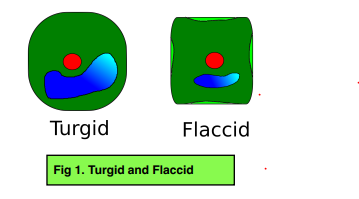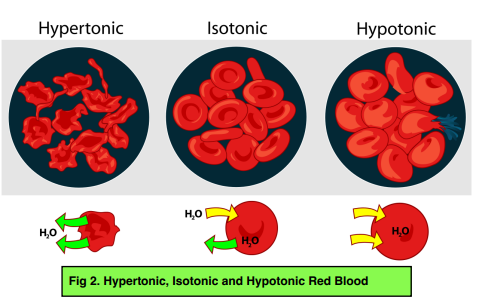Osmoregulation & The Kidney - Osmoregulation (GCSE Biology)
Osmoregulation
Osmoregulation
Osmoregulation in Homeostasis
- Osmoregulation is the control of blood water and mineral levels. Osmoregulation is the ability to change water and mineral levels in the blood. Water and nitrogen levels must be maintained in the body. This is another key component of homeostasis.
- Osmosis is the movement of water down a gradient. Osmosis is the movement of water from a region of high water potential to a region of low water potential. As we discussed earlier, osmosis is a key factor in the body’s homeostasis. It directly controls the water content of the blood. When water or salt levels change in the blood, there can be an osmotic effect that changes the function of the cell. This is not always desirable.
Osmoregulation in Plant Cells
- Plant cells can be turgid when full of water. When water enters a plant cell through osmosis, the cell wall can become turgid. This means that it is firm and full of water. This is very important in guard cells, because when they take up water, they become turgid and open the stoma of the plant, enabling water loss via transpiration.
- Plant cells can be flaccid when empty of water. When the plant cell loses water, the wall becomes flaccid, which can cause the cytoplasm to move away from the walls. If a plant is not watered for days, it can start to droop as the cells become flaccid.

Osmoregulation in Red Blood Cells
- In a hypertonic solution, RBCs become crenated. When there is an increased concentration of salt in the blood, it can be deemed a hypertonic solution. In such a fluid, the water potential of the blood is lower than the inside of the RBC. This leads to a net movement of water from the cytoplasm of theRBC to the blood, via osmosis, causing the cell to shrivel and shrink. This is known as crenation.
- In a hypotonic solution, RBCs undergo haemolysis. When there is a decreased concentration of salt in the blood, it can be deemed a hypotonic solution. In such a fluid, the water potential of the blood is higher than the inside of the RBC. This leads to a net movement of water from the blood into the blood cells, via osmosis, causing the cells to swell up. This can lead to the cells bursting, known as haemolysis.

Osmoregulation is the process by which living organisms maintain the right balance of water and dissolved substances in their body. It is important for the survival of all living organisms as it helps them to maintain the right concentration of solutes in their body fluids, which is necessary for normal cell function.
The kidney is the main organ responsible for osmoregulation in the human body. It filters blood to remove excess water and dissolved substances, such as salts and urea, and then reabsorbs the necessary substances back into the bloodstream, while excreting the excess in the form of urine.
The two main processes involved in kidney function are filtration and reabsorption. Filtration involves the removal of waste products and excess fluids from the blood, while reabsorption involves the selective reabsorption of necessary substances, such as glucose and ions, back into the bloodstream.
ADH (anti-diuretic hormone) is a hormone produced by the pituitary gland that regulates the amount of water reabsorbed by the kidney. When the body needs to conserve water, ADH is released, which increases the permeability of the kidney’s collecting ducts, allowing more water to be reabsorbed back into the bloodstream.
If the kidney fails to regulate water balance in the body, it can lead to a condition known as dehydration, where there is a lack of water in the body, or hyponatremia, where there is an imbalance of electrolytes in the body. Both conditions can have serious consequences on the normal functioning of the body.
Marine animals have adapted different strategies to regulate water balance in their bodies, such as by producing concentrated urine, drinking seawater and excreting excess salt through specialized glands, or through the use of specialized cells and organs that can transport ions and water across their body membranes.
Osmoregulation is important for plant cells, as it helps to maintain the right balance of water and dissolved substances, which is necessary for the turgor pressure that keeps the plant upright. Plant cells also have specialized organelles known as vacuoles, which store and regulate the concentration of ions and other solutes in the cell.
Osmoregulation is a key component of homeostasis, which is the maintenance of a stable internal environment in the body. By regulating water and solute balance, osmoregulation helps to maintain the right conditions for normal cell function, which is crucial for the overall health and survival of an organism.






Still got a question? Leave a comment
Leave a comment